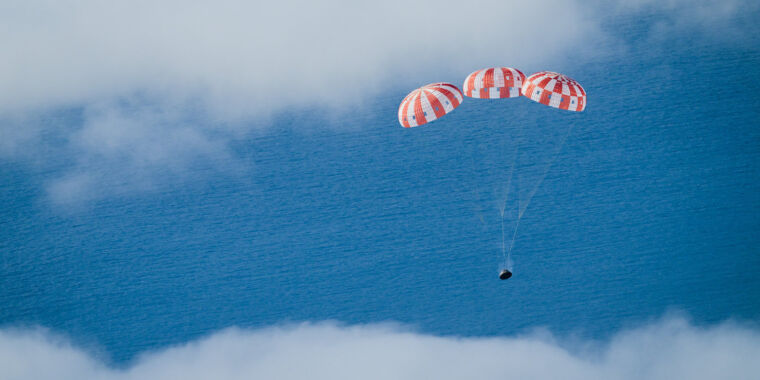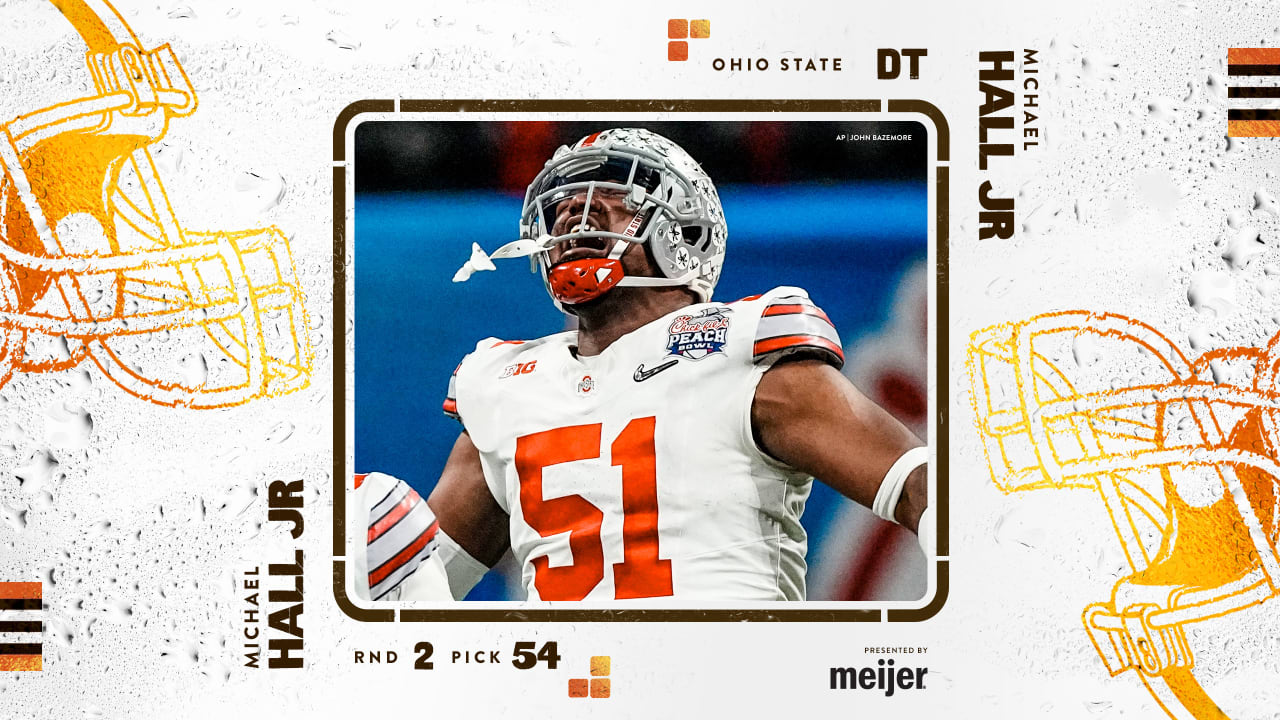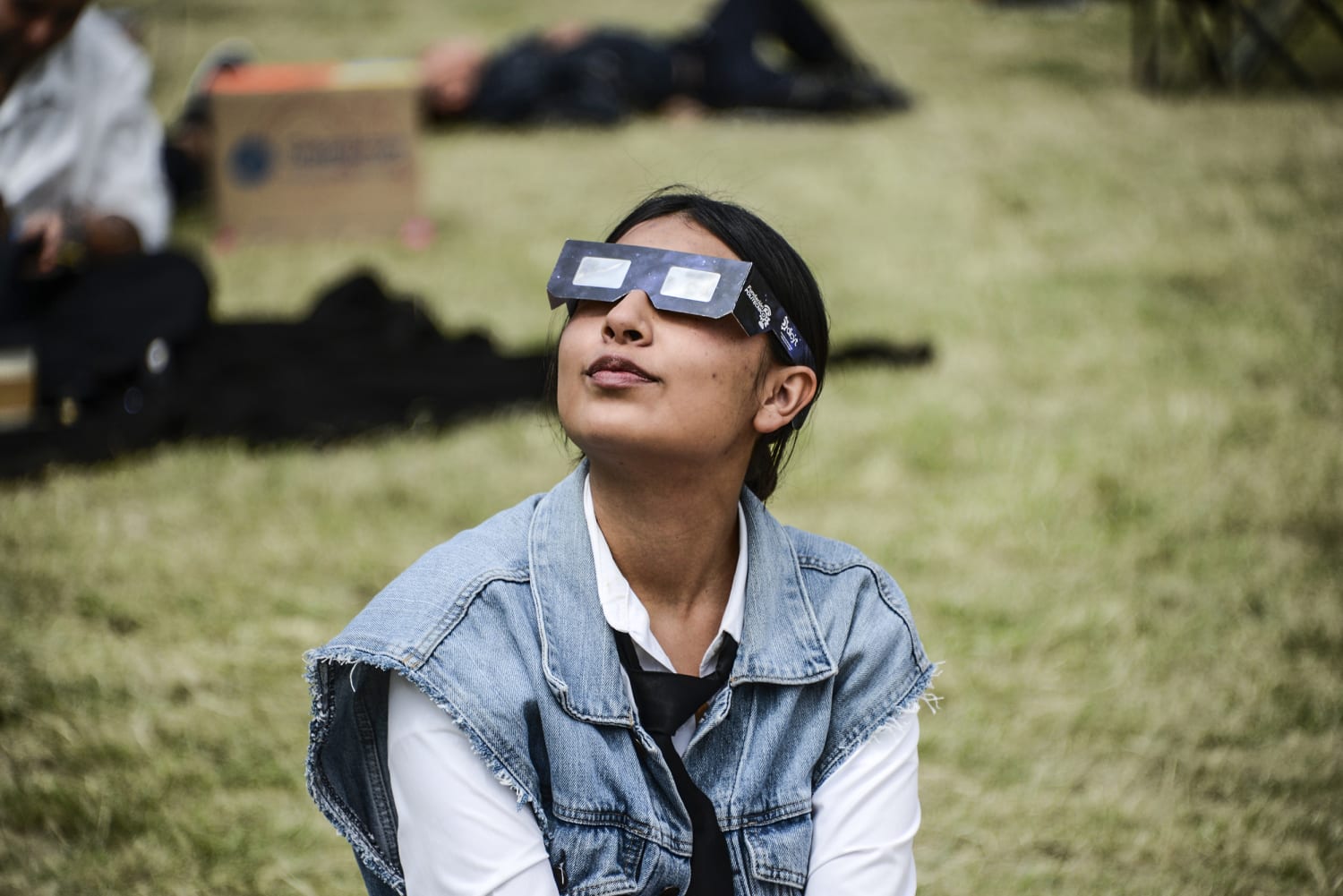People across the continental United States will see a partial or total solar eclipse next month, but you'll need to take precautions to avoid injury to your eyes.
On April 8, the Moon will pass between Earth and the Sun, temporarily blocking sunlight. During the celestial alignment, the afternoon sky will darken briefly along a path more than 100 miles wide, passing through Mexico, part of the United States and a small portion of eastern Canada.
Those outside this total path will be able to see a partial solar eclipse, where the Moon blocks only part of the Sun.
To view the scene safely, you can wear specialized glasses or build a pinhole projector. But do not try to view the eclipse through regular sunglasses or use tools such as telescopes to view it – even while wearing appropriate glasses – unless they are equipped with a special filter.
Here's what you should know.
How to find the right eclipse glasses
Glasses specially designed to look at the sun provide the only safe way to view the eclipse directly.
“Eclipse glasses are very important to prevent photothermal injury to the retina, and not just any old glasses — they should be eclipse glasses with an ISO 12312-2 filter,” said Dr. Nicole Bajek, a comprehensive ophthalmologist at Cleveland Clinic Cole. Eye Institute.
Glasses are “thousands of times darker” than sunglasses, According to NASA.
Without these precautions, viewing the eclipse can cause permanent eye damage.
“This is called solar retinopathy, which is damage to the very sensitive and complex cells that make up the retina, which is the lining of the back of the eye, and that's what converts light into electrical signals so we can see what we see.” Bajek said. “And when we get sun damage to those tissues, we can get decreased vision and central blind spots in our vision.”
When and how to wear your glasses
The only safe moment to look at the eclipse with the naked eye is “when the Moon completely obscures the rising face of the Sun — during the short, stunning period known as totality,” according to NASA, which adds: “You'll know it's safe.” When you can no longer see any part of the sun through eclipse glasses or a solar viewer.
It will be clear when totality will arrive, said Chris Hartenstein, a public engagement officer at NASA's Glenn Research Center in Cleveland, Ohio.
“When you wear eclipse glasses and look at the sun, you will see, even on the smallest sliver, the glow of the sun at the edge of that disk,” he said. “When it's all done, give yourself a few more seconds and then you can take it off.”
The total eclipse will last about three and a half to four minutes, depending on location. According to NASA.
Those viewing the partial eclipse should keep their eclipse glasses on at all times.
Glasses are not enough for people who want to use tools such as binoculars or cameras.
“Viewing any portion of the bright sun through a camera lens, binoculars, or telescope without a special-purpose solar filter mounted on the front of the optics will immediately result in serious eye injury.” NASA warns.
How to make sure your glasses are safe
NASA does not approve any particular brand of solar projector, but notes that it does List of the American Astronomical Society It is a safe choice and recommends avoiding online marketplaces where third-party sellers could sell counterfeits or mishandled products. the society He warned last week Counterfeit and counterfeit eyeglasses are “polluting the market.”
“Fewer hands needing to trade places between the time it's produced and the time it gets into your hands will help increase your chances of not getting some kind of inferior or less-than-desirable product,” Hartenstein said. .
Reusing eclipse viewing glasses is also an option if you're one of the millions who watched the 2017 solar eclipse and keep your pair.
“The actual filters and lenses are good indefinitely,” Hartenstein said, though he added that you should make sure the lenses aren't damaged, including scratches, holes, or creasing.
“If you're not sure, obviously get a new pair. But expiration dates, just because they're printed on the glasses, are not relevant to ISO standard solar filter materials,” Hartenstein said.
How to make and use a pinhole projector
If you can't find the right glasses, you can enjoy the eclipse Without looking directly in it Make a pinhole projector.
The device works by letting sunlight in through a small hole, focusing it and projecting it onto a piece of paper, wall or other surface to create an image of the sun that can be safely viewed.
To make a projector, cut a 1- to 2-inch square or rectangle from the middle of a piece of plain white paper or white cardboard. Tape a piece of aluminum foil over this cut out shape, then use a pin or thumbtack to make a small hole in the foil. Use a second piece of white paper or cardboard as the screen on which the projected image will appear.
To use your projector, place the paper screen on the ground, stand with the sun behind you, and hold your device with the foil facing up. Make sure to view only the projected image of the eclipse, rather than looking at the sun. Adjusting the distance you hold the projector from the screen will change the size of the resulting image.
A strainer or other household item with small holes can be used in the same way, and sturdier displays can be made using cereal boxes.
Even simpler: Find a shady tree and look at the ground beneath it—you'll likely see crescent-shaped shadows.

“Amateur organizer. Wannabe beer evangelist. General web fan. Certified internet ninja. Avid reader.”

:max_bytes(150000):strip_icc()/NCIS-Hawaii-042624-0f85e6836e064b85bd1e567cf1f5a655.jpg)





More Stories
NASA still does not understand the root cause of Orion's heat shield problem
Boeing Starliner astronaut's first flight: Live updates
Strange spiders spread in the Inca city on Mars in amazing pictures